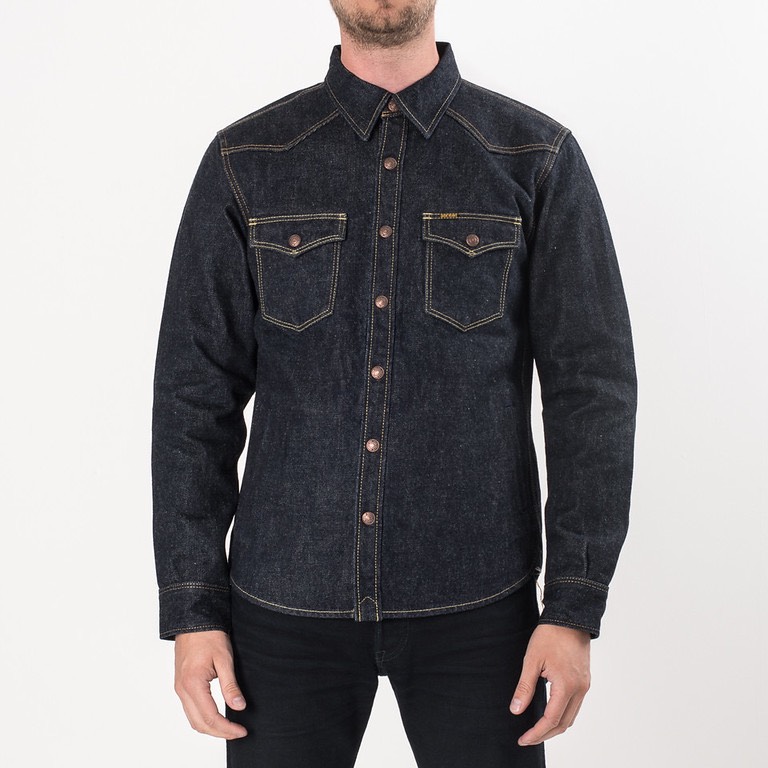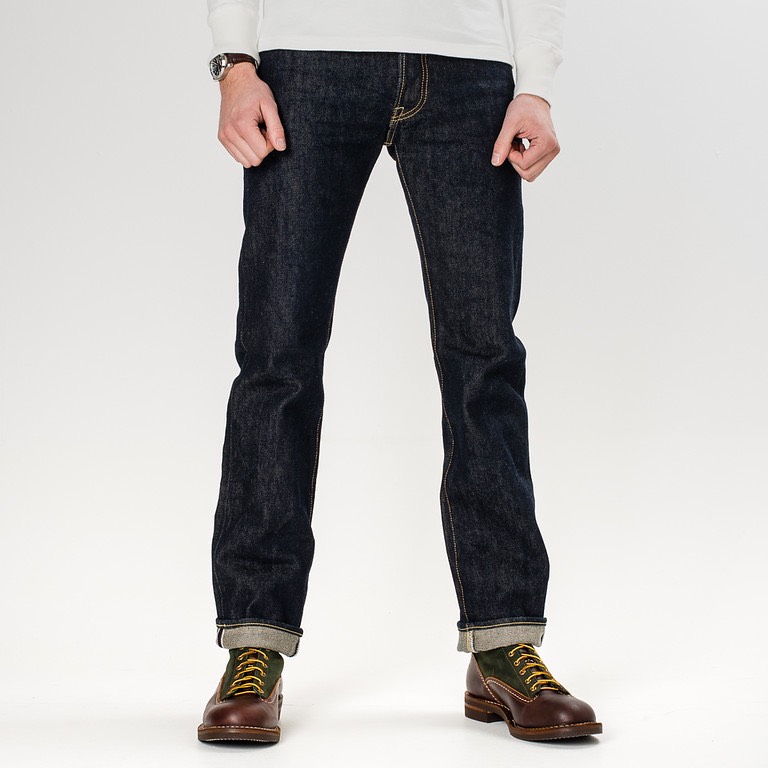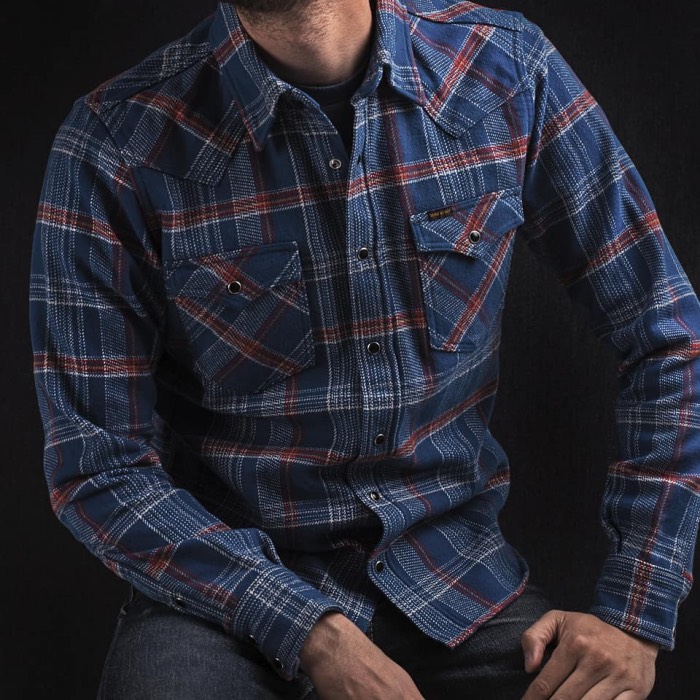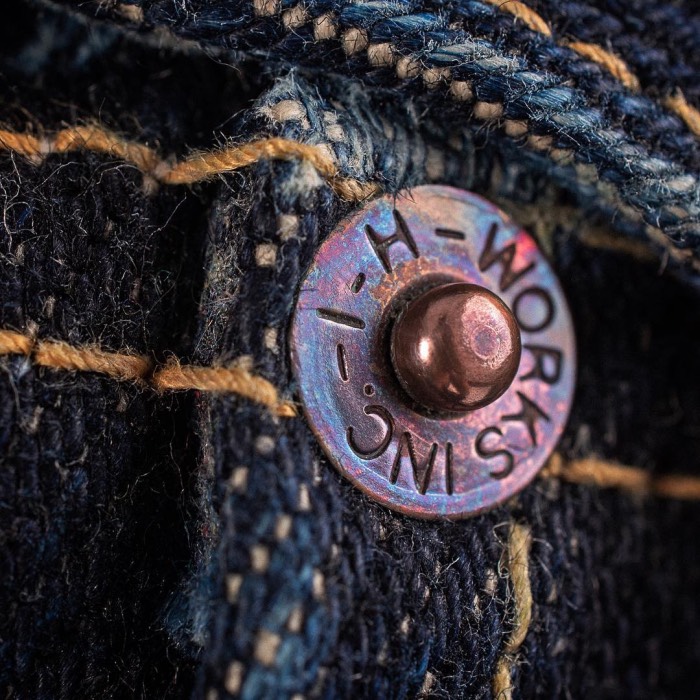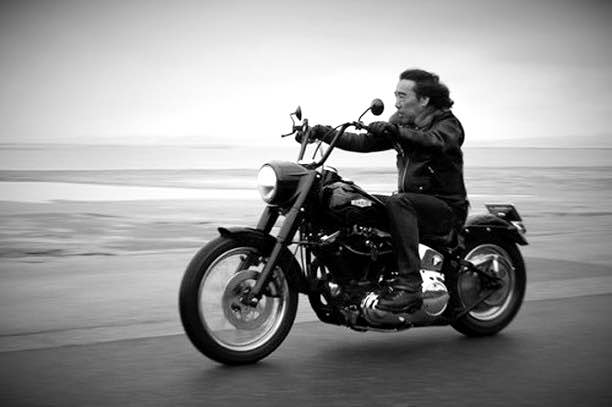The world of Japanese denim can seem somewhat inscrutable at first glance. The deeper you go, the more there is to learn, the more there is to enjoy, and yes, the more you need to go out and get a second job to support your new habit. Taking advantage of the Japanese denim craze, upstart brands appear seemingly out of thin air, both in Japan and overseas, further straining the already insufficient supply of shuttle-loomed selvedge denim now being created by only a few mills based mostly in Okayama. Makers also scramble to keep up with the fickle world of fashion as tastes and trends shift and flow like liquid. How then does one maintain a secure foothold in all of this while remaining faithful to your original vision? If you are Shinichi Haraki, creator and president of Iron Heart Works, the answer has been simple from the very beginning. Create only things that you yourself would want to wear and then make them of the highest quality physically possible.
Sure, we’ve all heard similar pitches before. Companies of all types profess love for their own products and sing to us of their exceptional quality, but this is often nothing more than marketing fluff. “I only make things that I myself want to use. That means that any compromise whatsoever would mean compromising myself, and that I will not do”, says Haraki-san, and when you first pick up a pair of Iron Heart jeans or one of their signature flannels (or anything else in their shop) you know immediately that he isn’t kidding. It is said that Iron Heart is over-engineered as standard, and that might even be an understatement. No matter what product you hold in your hand, you find yourself saying, “Damn. This is the thickest and heaviest (insert item here) I’ve ever felt in my life”.
Haraki-san used to work for jeans giant Edwin and did consulting for various other clothing brands before striking out on his own and eventually creating Iron Heart in 2003. Originally intended for riders, Iron Heart has always focused on heavy materials and super-solid craftsmanship, and even before really heavy denim was cool they were making their now-famous 25oz denim items. Requiring extremely skilled craftsmen to weave such heavy fabric, Haraki-san tells of looms self-imploding under the strain and entire runs of denim that had to be tossed because they weren’t 100% perfect. The vintage sewing machines have to be customized to penetrate the layers of thick denim, and super-heavy gauges of thread are also a must. Legend even has it that the sewers need to wear protective goggles to protect their eyes from the needles that will explode every so often due to the insanely thick layers of fabric they are trying to penetrate. Nothing like the odd bit of shrapnel to punctuate your work day with excitement.
Constructing clothing this durable wouldn’t count for much if you can’t actually wear the stuff and still do all the things that we humans do. I myself remember thinking that, yes, that all sounds lovely, and yes, the clothes themselves are beautifully-made and hopelessly good-looking, but I’m not a biker, nor do I require body armor in (most of) my daily life. You also might not be into a long and painful break-in period. This is where a lot of first-time Iron Heart customers are pleasantly surprised. Even in heavy weights, Iron Heart’s denim is surprisingly pliant and soft. Heading north of 20oz in most brands will have you doing the stiff-legged shuffle for the first week, this sometimes coupled with raw backs-of-the-knees and even crushed man bits. My 21oz Iron Hearts were nothing like that. They are certainly thick, no doubt about that, and it did take some bending and stretching to get things feeling right, but the fabric itself, especially on the inside where it counts, is actually really soft. It is an odd sensation having jeans so thick and heavy and yet feeling almost flannel-like on the inside. I was walking and moving semi-normally in these jeans within hours: lightspeed-quick by modern heavy denim standards.
In the case of the 21oz-ers this is helped by the fact the denim is both sanforized and washed once. Haraki-san says that this softness is also due to Iron Heart’s practice of using a double-thread weft, which he says makes the inner face of the fabric (the side touching your skin) quite soft to the touch. The sanforized fabric makes sizing a breeze and gives you comfortable jeans (almost) right off the shelf. And for those perhaps not wanting something quite so heavy, Iron Heart has you covered with denim weights ranging from a summer friendly 14oz right up to the legendary 25oz take-on-all-comers fabric. They also offer a range of 8 different cuts and finish their jeans with all the little custom details that discerning denim fans demand.
To complement your now-indestructible lower half, Iron Heart also makes a wide range of tops, ranging from Tees and sweatshirts to ultra heavy outerwear and thick leather jackets. They also produce accessories for riders: hats, gloves, bags, wallets, and even jewelry, all made with the same basic premise in mind: function and rock-solid construction.
Unlike other Japanese denim brands, Iron Heart actually has a well-developed international arm courtesy of Giles Padmore and family in the UK. Giles has been working with Haraki-san for many years and is the face of the brand outside of Japan. He is also the creator of the Iron Heart website: an online shop and treasure trove of denim knowledge and information on Iron Heart jeans (and just about any other brand you can think of). This includes a friendly forum and, quite usefully, sizing-charts and advice on choosing what cut and size would best suit you if you’re unable to physically visit a shop that stocks Iron Hearts. Absent from most Japanese denim brands, this English support can make purchasing the right size of jeans online a lot less daunting. Their forums also house thousands of fit photos where you can get your jeans evolution fix and see each cut being worn by actual people – a huge help when trying to decide where to drop your hard earned dollars/pounds/yen.
You’ve by now noticed I’ve typed all these words and still haven’t said the “F” word. “Yeah but how do they faaaade, fool?!” I can hear them yell. By all indications, slowly and beautifully. It is worth noting however that Haraki-san himself isn’t really into the high-contrast fades most of us are after so I don’t think Iron Hearts are created with that in mind; it’s more of a happy side-effect than something that is engineered into the jeans. A quick Google search for ‘iron heart fades’ will reveal whiskers and honeycombs to make you weep, and, along with Samurai, I do believe that Iron Heart are the most popular choices for ‘fade contests’ and feature heavily in Heddels’ coveted Fade of the Day/Week archives. I did say however that Iron Hearts tend to fade slowly so if you’re looking for a quick-hit, high-contrast sugar rush you’d better look elsewhere. Patience is required. I was eyeing one perfectly-faded example on display in Iron Heart’s Kojima store (amazing condition, no repairs, incredible fades) and was told that they had been worn almost daily. For 8 years. Okay, then. Best get started.
If you do ever manage to catch a glimpse of Haraki-san on his Harley, thundering through the hundreds of miles separating his three Japan shops you get a sense of what the man is about. He is a man walking the walk, wearing the very best clothing available that he himself wanted, designed and built. And we are all the better for it. Long may he ride.
Check out Japanalogue’s exclusive Q&A with Haraki-san here.
